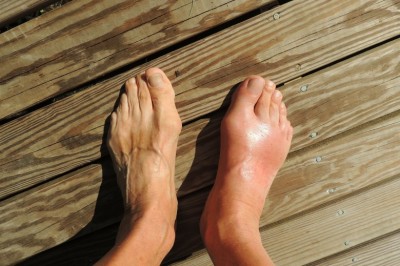Is It Normal to Have Different Sized Feet?
Q: How Common Is It to Have Different Sized Feet?
A: The easy is answer is that everybody has different sized feet! Go ahead and take a look. Your two feet are not the same. Dont believe me? Get out a pad of paper and trace your right foot and your left foot. Now measure the foot length and width. (You want to measure the maximum foot length and width. This means that you should measure from the tip of the big toe to the very back of the heel to calculate length. And measure across the ball of the foot, at its widest point, to calculate width). If your feet are a perfect pair, then count yourself in the minority!
Now most peoples feet are close enough in size that they can fake it. Using the standard American shoe system, one shoe size represent one third of an inch. If you compare a shoe thats a size 7 with a shoe that size 7 ½ , you should find that the shoes are just about 1/6 of an inch apart. One sixth of an inch shouldnt make that much of a difference in shoe fit, so if your feet are only a half size apart, you can probably get away with wearing the same size shoes. Go with the size of your bigger foot.
Its better to lace up a slightly loose shoe than to cram your bigger foot into a shoe thats too tight.
People can also have feet that are two different widths. In the standard American shoe system, shoes increase 1/4 of an inch in width for every size you go up. If your feet are long and skinny, or short and broad, you may need to shop around a bit to find shoes that will properly complement your specific foot shape.
Some people are simply born with feet that are two different sizes. Other people have feet (or a foot) that change size over time. Foot injury, especially if it occurs in childhood when the bones are still developing, may cause one foot to end up slightly smaller and weaker than the other. Anyone who has ever worn a cast for an extended period of time knows how quickly the surrounding muscles can shrink. Corrected foot deformities may also result in feet that are two different sizes.
A corrected clubfoot, for example, tends to be smaller and broader than the healthy foot. Feet also tend to lengthen with age as the arch gradually collapses (this is especially true for people with high arches), but they may not lengthen at the same rate. Athletes who use one foot much more than the other may find that the continual stress of the sport lengthens that foot overtime.
Jane Barron works for OddShoeFinder.com,a free online website that helps people find mismatched footwear.If you are looking for different sized shoes, or information useful to polio survivors, people with diabetes foot problems, and people with foot size differences, visit: www.oddshoefinder.com






















